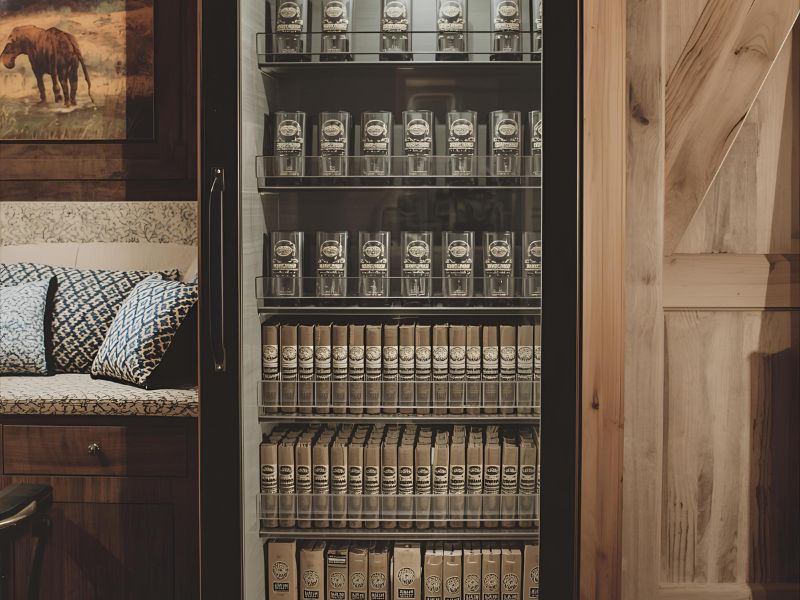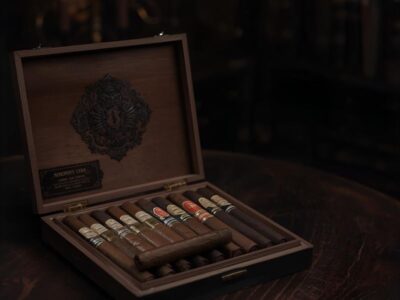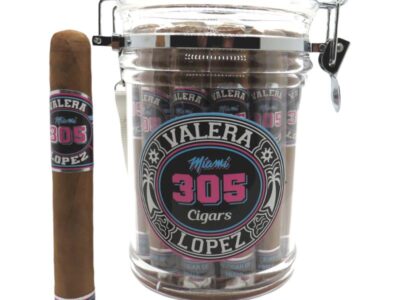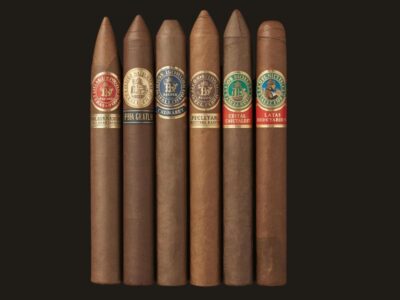Imagine this: you’ve just walked into a quiet lounge. The soft click of a wooden box opening. You lift the lid and are greeted by that calming, slightly sweet aroma of cedar and aged tobacco. Inside, your cigars rest in perfect harmony—neither too dry nor too moist—waiting for you to enjoy them at your leisure. That box is your humidor, and it’s far more than a decorative accessory: it’s the guardian of your investment, the silent protector of flavor, aroma, and structure.
If you’re reading this, you want to learn all about a humidor for cigars—what it is, why you need one, how to choose one, and how to maintain it so your cigars stay at their best. Whether you’re a complete beginner or someone who’s curiosly browsing possibilities, this article is for you. Stay with me: by the end, you’ll feel confident about what to look for—and be one step closer to giving your cigars the home they deserve.
Contents
- 1 1. What Is a Humidor (and Why It Matters)
- 2 2. Ideal Conditions: Temperature, Humidity & Wood
- 2.1 2.1 Temperature & Humidity
- 2.2 2.2 Why Spanish Cedar is Preferred
- 2.3
- 2.4 3. Types of Humidors: From Desktop to Cabinet
- 2.5 3.1 Desktop Humidor
- 2.6 3.2 Electric / Thermoelectric / Climate-Control Humidor
- 2.7 3.3 Humidor Cabinet / Cigar Cabinet Humidor
- 2.8 3.4 Wineador & Refrigerated Humidors
- 2.9 3.5 Travel / Compact / Travel Humidor
- 3 4. Choosing the Right Size & Capacity
- 4 5. Key Features to Watch For
- 5 6. How to Season a New Humidor
- 6 7. Calibrating Your Hygrometer
- 7 8. Maintenance & Best Practices
- 8 9. Common Problems & How to Solve Them
1. What Is a Humidor (and Why It Matters)
A humidor for cigars is essentially a controlled environment—a box or cabinet—that helps you maintain the right humidity and temperature so your cigars stay fresh, flavorful, and intact over time. Without a humidor, your cigars will start losing moisture within days, which can ruin their structure, lead to harsh burning, and degrade flavor.
Why is this so important? Tobacco is a living, hygroscopic material (it absorbs and releases moisture). The wrapper leaf, the binder, and the filler all respond to humidity changes. If the environment is too dry, cigars become brittle and burn too fast; if it’s too moist, they may become soft, may not burn correctly, and could even develop mold or tobacco beetle infestation if conditions are extreme.
A well-designed humidor buffers these fluctuations, giving your cigars a steady “climate” to age gracefully. Think of it as your cigars’ mini tropical haven—except set to a perfect balance rather than the jungle.
2. Ideal Conditions: Temperature, Humidity & Wood
2.1 Temperature & Humidity
- The commonly accepted ideal environment for cigars is 70 °F (21 °C) and 70% relative humidity (RH). Many aficionados refer to it as “70 × 70.”
- However, a safe operating range is often between 65% and 72% RH, and temperatures from about 65 °F to 72 °F.
- Why not push above 75% RH? Because high humidity and high temperature can trigger tobacco beetle eggs to hatch, cause mold, or degrade flavor.
Keep your humidor away from direct sunlight, radiators, HVAC vents, or windows that heat up. Sudden temperature swings stress the box and your cigars.
2.2 Why Spanish Cedar is Preferred
Most quality humidors use Spanish cedar (or a variant of cedar) for the interior. Why?
- Cedar holds and buffers moisture well, helping regulate internal humidity.
- It repels tobacco beetles: cedar wood tends to be inhospitable to pests.
- It provides aroma: a faint, pleasant cedar note that complements tobacco rather than overpowering it.
- It resists warping or cupping under humidity stress better than many other woods.
Thus, when someone speaks of a Spanish cedar humidor, they refer to one with that classic, beneficial interior.

3. Types of Humidors: From Desktop to Cabinet
Humidors come in many shapes, sizes, and technical levels. Below are the common types, with their pros, cons, and use cases:
3.1 Desktop Humidor
A desktop humidor is compact, sits on your desk, shelf, or table. It often holds anywhere from a dozen to a few dozen cigars. This type is ideal for beginners or those who only keep a modest rotation of sticks. The simplicity and lower cost make it a favorite among novices.
3.2 Electric / Thermoelectric / Climate-Control Humidor
An electric cigar humidor (or thermoelectric humidor) uses a built-in climate control or cooling/heating element to maintain more precise temperature.
- Pros: More stable environment even if ambient room temperatures fluctuate.
- Cons: More expensive; requires power; may have moving parts that can fail.
- These models are great for those in warmer climates or areas with big temperature swings.
3.3 Humidor Cabinet / Cigar Cabinet Humidor
A cigar cabinet humidor is a large, often freestanding unit—like a piece of furniture. These can store hundreds to thousands of cigars (i.e. humidor for large collections). They often have drawers or trays, sometimes even humidification systems built in, making them ideal for hobbyists or collectors expanding their vault.
3.4 Wineador & Refrigerated Humidors
A wine cooler converted to a humidor (a “wineador”) is a popular DIY or third-party approach. Similarly, climate-controlled units (mini refrigeration + humidity control) are also used, especially for high-end, luxury cigar humidor solutions.
3.5 Travel / Compact / Travel Humidor
For travel or portability, compact travel humidor (or cigar travel humidor) is your pick. These are small, often cylindrical or box-shaped, with seals and humidification inserts to maintain proper RH on the go. Very useful for a few cigars when you travel or visit a lounge
4. Choosing the Right Size & Capacity
4.1 Overestimate Rather Than Underestimate
One rule of thumb: it’s better to have a humidor that’s a bit larger than your current needs. Why?
- You want proper air circulation inside. Overcrowding can block airflow, making humidity uneven.
- If the humidor is too small for your collection, it may be less stable. Too big, and it may be harder to maintain humidity, particularly if it’s mostly empty.
- Many sources recommend buying a humidor that holds more than what you currently have planned—room to grow.
4.2 Understanding “Humidor Capacity”
When manufacturers list capacity (e.g. 50-count, 100-count, 200-count), they’re estimating based on a standard cigar size (often robusto/Corona sizes). Real capacity may vary depending on ring gauge, box inserts, and internal features (drawers, humidifier, walls). Always assume a margin. Also, account for the space the humidification system uses. Don’t pack it wall-to-wall: leave a few inches of breathing room.
4.3 Layout: Trays, Drawers, Compartments
Humidors with multiple drawers or trays are elegant. They help you separate mild, medium, and full-bodied cigars. If you like variety, look for a humidor with a humidor accessories drawer or divider structure so aromas don’t mingle. This is especially helpful if you plan to expand.
5. Key Features to Watch For
Here’s what you should look for when evaluating a humidor (this is your humidor buying guide checklist):
5.1 Airtight Humidor Seal
Your humidor needs a very good seal: the lid should snugly close and hold humidity inside. The seal should not be so tight that no air exchange happens, but tight enough that RH remains stable.
Some humidors use magnetic gaskets or silicone seals. Test by closing the lid over a dollar bill and pulling: you want gentle resistance—if it slips out easily, it might be too loose.
5.2 Humidification System
Different methods exist:
- Traditional sponge / oasis foam + distilled water
- Beads or crystals
- Gel jars
- Electronic humidifiers
- Boveda or 2-way humidity packs
Each has trade-offs in maintenance and stability. Many aficionados now favor beads/crystals or two-way packs for ease.
For an electric cigar humidor or humidor with temperature control, the climate system helps adjust humidity by controlling temperature. These are premium systems and add to cost and complexity.
5.3 Hygrometer (Analog or Digital)
You must be able to measure the RH inside the box. A good, accurate hygrometer is essential. Many humidors include a basic analog model, but enthusiasts often upgrade to a calibrated digital one. Calibration is crucial.
5.4 Construction Quality & Material
- Interior: Prefer Spanish cedar
- Exterior: Mahogany, walnut, or fine veneers
- Corner joints, hinge quality, thickness—all matter
- Insulation: Thicker walls or added insulation help buffer external changes
5.5 Extras & Premium Features
- Built-in humidifier trays
- Removable trays / drawers
- Tabletops with glass tops
- Digital displays / controls
- Locking lids
- Additional compartments (drawer for accessories)
These features are more common in luxury cigar humidor models.
6. How to Season a New Humidor
A new humidor must be seasoned before you put cigars inside. If you skip this, the dry wood will absorb moisture from your cigars, drying them out.
Here’s a step-by-step process:
6.1 Methods of Seasoning
Method A: Traditional Wipe & Sponge
- Use a clean, unscented sponge.
- Moisten it with distilled water only (never tap water) because minerals in tap water can interfere with the humidification system.
- Wipe the interior wood surface (lid, walls, trays/dividers).
- Place the sponge inside the humidor in a plastic bag so it doesn’t directly touch the cedar wood.
- Let the box close and sit for 12–24 hours. Monitor hygrometer.
- Repeat until the RH stabilizes around 65–70%.
Method B: Boveda Humidor Starter Kit (or 2-way seasoning packs)
- Use 84% RH seasoning Boveda packs (typically 60-gram) in the empty humidor.
- Seal the humidor and let the packs work for about 14 days, without opening the lid frequently.
- After seasoning, switch to 72% RH packs and insert cigars (leaving ~20% free space).
This method is one of the simplest and lowest-maintenance options.6.2 Important Tips & Timeline
- Don’t rush. Some sources say it can take 3–5 days or more to properly season.
- During seasoning, it’s normal for the hygrometer reading to drift high (e.g. 80%+), especially early on. Just let it stabilize.
- After seasoning, remove the sponge / plastic bag and carefully place humidifier and hygrometer in their positions.
- Don’t flood the wood—avoid over-saturating; the wood should be gently moist.
7. Calibrating Your Hygrometer
An inaccurate hygrometer is a major source of frustration for cigar enthusiasts. If your hygrometer is off, you may misjudge humidity levels and harm your cigars. So calibration is critical.
7.1 Salt Test Method (Simple DIY)
- Place a small container of table salt and a few drops of distilled water inside a sealed plastic bag or container. The humidity in that sealed space will stabilize around 75%.
- Place your hygrometer inside (not touching the salt).
- After 6–8 hours, the hygrometer should read 75%.
- If it doesn’t, note the difference: e.g., if it reads 78%, subtract 3 points in your mind (or mark it). If your hygrometer has a calibration screw, adjust it.
- Repeat as needed.
7.2 Calibration Bags / Kits
Some kits (e.g. Boveda 75% calibration pack) are sold for calibration. You place the hygrometer in the sealed calibration environment and adjust accordingly.
7.3 Practical Tip
Even if you can’t perfectly calibrate it, note whether it runs +2% or –3% from the true RH and mentally adjust your readings. Many seasoned cigar lovers operate this way.
8. Maintenance & Best Practices
Once your humidor is seasoned and calibrated, here’s how to keep it running smoothly:
8.1 Monitor Regularly
- Check the hygrometer at least once a week.
- Recharge your humidifier as needed (with distilled water or humidification solution).
- Don’t open the lid unnecessarily—that allows humidity to escape.
- Once a month, gently rotate or rearrange the cigars to avoid “dry spots.”
8.2 Re-seasoning & Recharging
- Over long periods (especially if left empty), wood may dry out and need light re-seasoning.
- Always recharge your humidifier before RH dips significantly.
8.3 Cleaning & Exterior Care
- Use a soft, dry or very slightly damp (distilled water) cloth to wipe the exterior. Don’t use harsh chemicals or cleaners.
- Dust drawers, rails, hinges, and corners.
- Polish the exterior wood (not the interior) with beeswax polish or a product recommended by the manufacturer.
- Maintain ambient room temperature and keep the humidor away from vents, windows, or heat sources.
8.4 Seasonal Adjustments
If your local climate changes (dry winter, humid summer), you may need to adjust the humidification—slightly higher RH in drier months, slightly lower in humid months. The goal is always to stay in the stable “sweet spot.”
8.5 Handling the Lid and Seal
- Don’t slam the lid—gentle closure is better.
If you notice the seal loosening with time, some humidors allow replacement of gasket strips.
9. Common Problems & How to Solve Them
Problem | Possible Causes | Solution |
RH too low (under 60%) | Humidifier needs recharge, wood too dry, leaky seal, frequent opening | Recharge humidifier; check and improve seal; avoid opening too often |
RH too high (over 75%) | Over-humidification, room too humid, power/electronic issues | Remove humidifier briefly; add a silica bead pouch; ensure ventilation |
Mold or black spots appear | High humidity + stagnant air | Lower RH, increase airflow, remove affected cigars, sterilize interior (light wipe with 70% isopropyl) |
Tobacco beetles or tiny holes | Excess heat or RH, infestation | Reduce temperature below 75 °F, RH below 72%, inspect and treat |
Uneven humidity in different compartments | Poor airflow or overcrowding | Rearrange cigars, ensure breathing room, reduce load |
Hygrometer drift / inaccuracy | Faulty or uncalibrated hygrometer | Recalibrate or replace with a better digital unit |
Even the most careful humidor suffered setbacks—consistency and patience are your allies.
You don’t need to break the bank for decent quality. For a humidor for beginners, many good desktop models start in the $50–$150 range. But for a stable, premium humidor with a solid seal, Spanish cedar, and included accessories, expect to pay more. For full-sized luxury humidor or cabinet models, costs can reach several hundred to thousands of dollars.
For those living in areas with large temperature swings or higher ambient heat/humidity, yes—an electric or climate-control humidor can maintain more stable conditions. But the trade-off is higher cost, complexity, and reliance on electronics. If your environment is stable, a well-made passive humidor often suffices.
No. Always use distilled water (or specially prepared humidification solution). Tap water contains minerals and impurities that can lead to buildup or bacteria, which may clog the system or degrade your cigars.
Yes—if you arrange them thoughtfully, perhaps in separate trays or compartments. Many humidors have multiple drawers. Always position milder cigars in a place less influenced by stronger ones, and rotate them occasionally to avoid flavor bleed-over.
If stored properly, cigars can last for months, years—even decades—while aging gracefully. A humidor protects them from drying or spoiling. But you should smoke or rotate them—don’t leave them untouched forever.
A well-crafted humidor for cigars is more than just a box—it’s the foundation of a cigar-loving lifestyle. It gives your precious sticks a stable, nurturing environment, preserving their aroma, combustion quality, and character. Whether you start with a desktop humidor or aspire to a majestic cigar cabinet humidor for large collections, the principles are the same: thoughtful sizing, quality materials, good seal, reliable humidification, and consistent maintenance.
At Valera Lopez Cigars, we believe your cigars deserve nothing less than exceptional care. Our premium cigars, born of heritage and passion, reward your patience and respect. Pair them with a well-chosen humidor, and you’ll be able to enjoy each draw in the fullness intended by their makers.

Valera López Cigar, founded in 2020 in Miami, takes pride in offering premium cigars of the highest quality and reliable delivery service both within and outside of Florida. Our mission is to provide a unique experience with every smoke, ensuring satisfaction and excellence in every detail.







